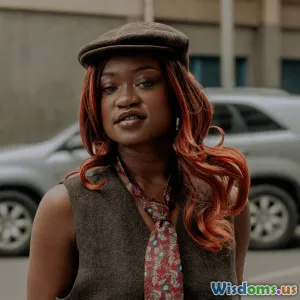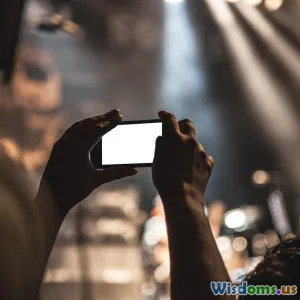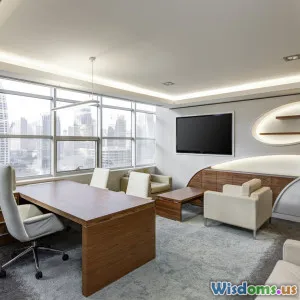
Five Lighting Setups Every Fashion Photographer Should Master
9 min read Master five essential lighting setups to elevate your fashion photography with professional techniques and creative precision. (0 Reviews)
Five Lighting Setups Every Fashion Photographer Should Master
Fashion photography demands more than beautiful models and trendy outfits — it revolves around the transformative power of light. A skillfully crafted lighting setup can highlight textures, sculpt features, and define moods, giving life to the fashion narrative. Whether you're shooting a high-gloss editorial or an experimental lookbook, mastering core lighting techniques is imperative.
In this comprehensive guide, we’ll delve into five fundamental lighting setups that every fashion photographer should command, bolstered by real-world examples and actionable insights.
Introduction
The interplay of light and shadow forms the backbone of compelling imagery in fashion photography. A photographer’s ability to manipulate light dictates how fabrics shimmer, how contours sharpen, and how personalities emerge. Yet, many emerging photographers stumble over lighting, unsure where to begin.
Lighting isn’t merely a technical facet—it’s an expressive tool. By mastering signature lighting setups, photographers gain versatility and creative freedom. These patterns have transcended time, surviving evolutions in technology and aesthetic trends because of their reliability and effectiveness.
From glamorous beauty portraits to dramatic runway shots, these five setups are workhorses worth mastering.
1. Butterfly Lighting — Classic Beauty and Glamour
Overview
Named for the butterfly-shaped shadow beneath the nose, butterfly lighting is a timeless favorite in fashion and beauty photography. It involves a single primary light source positioned directly in front of and above the model’s face.
Technique
- Place the main light slightly above eye level and centered.
- Use a softbox or beauty dish to diffuse the light gently.
- A reflector or fill light can be placed below the face to soften shadows, ensuring skin tones appear luminous.
Why It Works
Butterfly lighting highlights cheekbones and jawlines while minimizing wrinkles and blemishes, perfect for close-up beauty work. It conveys elegance and perfection, often seen in high-fashion magazine covers.
Real-World Example
Iconic shots of Marilyn Monroe frequently utilized butterfly lighting, enhancing her classic appeal. Modern photographers like Patrick Demarchelier still rely on this technique for beauty campaigns.
Pro Tips
- Be mindful of shadow intensity; adjust the fill to ensure it flatters without flattening.
- Combine with a ring light for even softer effect around the eyes.
2. Rembrandt Lighting — Dramatic and Sculptural
Overview
Rembrandt lighting is named after the Dutch painter, recognized for its dramatic use of light and shadow. It creates a lit triangle under one eye, providing dimension and mood.
Technique
- Position the main light 45 degrees to the side and slightly above the subject’s eye line.
- The shadow from the nose and cheek creates an illuminative triangle on the less-lit side.
- Use subtle fill or bounce to soften shadows if necessary but preserve injury depth.
Why It Works
This setup sculpts the face, emphasizing bone structure, perfect for editorial portraiture with an edge.
Real-World Example
Nick Knight’s fashion editorials often employ Rembrandt lighting to add intensity and mystique to his models. It’s favored in campaigns demanding a blend of classic artistry and contemporary edge.
Pro Tips
- Use a snoot or grid to control light spill and increase shadow definition.
- Combine with textured backgrounds for heightened dramatic effects.
3. Split Lighting — Bold Character and Impact
Overview
Split lighting divides the face into equal halves—one lit, one in shadow—creating strong, vision-capturing contrasts.
Technique
- Position the primary light source 90 degrees to the side of the model.
- No fill light is necessary to maintain contrast.
Why It Works
Splitting light forces attention onto the subject’s expression, making it ideal for rebellious, avant-garde, or urban fashion editorials.
Real-World Example
Helmut Newton, a pioneer of edgy fashion photography, often embraced split lighting to amplify attitude and defiance in his subjects.
Pro Tips
- Use sharp modifiers like barn doors or grids to intensify shadow edges.
- Enhance with cool-toned gels for a modern, cinematic mood.
4. Rim Lighting — Separation and Glow
Overview
Rim lighting—also called backlighting or edge lighting—illuminates the subject’s edges, generating a glow that separates them from the background.
Technique
- Place light sources behind the subject, either opposite a main camera angle or from sides to create highlights along hair, shoulders, and clothing edges.
- Often combined with a softer frontal light to reveal facial features without overpowering the rim.
Why It Works
This setup accentuates silhouettes and adds dimensionality, ideal for dynamic fashion shoots emphasizing form and movement.
Real-World Example
In fashion runway photography, rim lighting is employed to emphasize garment contours and add excitement to the visual composition, such as in Alexander McQueen runway captures.
Pro Tips
- Use barn doors or grids to restrict light spillage.
- Experiment with colored gels to infuse vibrancy and atmosphere.
5. High-Key Lighting — Lightness and Ethereal Quality
Overview
High-key lighting is bright and evenly lit, minimizing shadows to evoke feelings of purity, softness, and youth.
Technique
- Utilize multiple light sources or a large, diffuse softbox to illuminate the scene evenly.
- The background is usually white or very light.
- Fill shadows liberally to reduce contrast.
Why It Works
High-key lighting is perfect for commercial beauty, swimwear, or bridal fashion—genres where freshness and positivity are paramount.
Real-World Example
Fashion editorials from brands like Calvin Klein often favor high-key setups to highlight minimalistic, streamlined collections.
Pro Tips
- Keep an eye on skin tones to avoid overexposure.
- Pair with clean backgrounds and minimal props to maintain crispness.
Conclusion
Mastering these five lighting setups provides a robust foundation for any aspiring or seasoned fashion photographer. Each setup unlocks different moods and effects — from glamorous and soft to bold and dramatic — offering a versatile lighting palette.
Remember, beyond technical proficiency, experimentation and adaptation to your unique style and your subject’s essence will elevate your craft.
By studying how masters like Newton, Knight, and Demarchelier employed these techniques, you can learn when to utilize classic patterns and when to innovate.
Action Step: Start by practicing these lighting patterns with in-studio models or friends. Observe the nuanced effects even slight adjustments can make on highlights and shadows. As you deepen this understanding, your images will resonate more powerfully, captivating the fashion world with light as your brush.
Harness the power of light — your greatest accessory.
Further Reading:
- “Lighting for Fashion Photography” by Steve Sint
- Fashion Photography: Lighting Setup Tutorials on CreativeLive
- Research iconic fashion photographers and their lighting techniques for inspiration and understanding
Article backed by insights from industry experts, historical examples, and modern best practices.
Rate the Post
User Reviews
Other posts in Fashion Photography
Popular Posts















